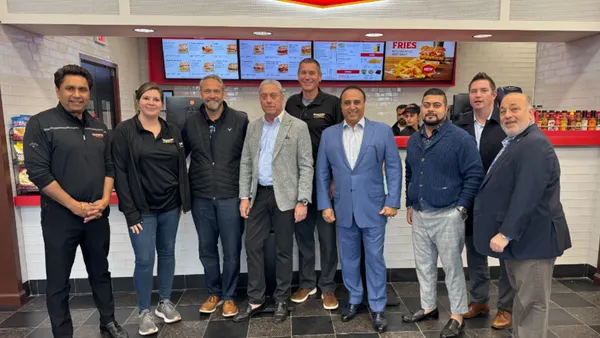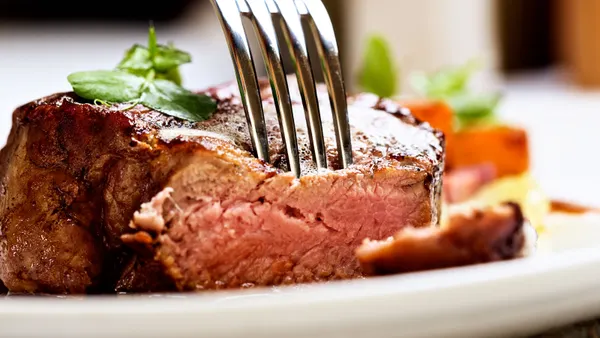Dive Brief:
- Starbucks invested $325 million in an Illinois wind farm to power 340 stores in the state, according to Restaurant Business.
- The investment will allow the wind farm to generate 48,000 megawatt hours of wind power, enough energy to brew about 100 million cups of coffee.
- Starbucks previously invested in a solar farm in North Carolina that produces enough energy to power more than 600 stores across the South and Mid-Atlantic. It also is working with Puget Sound Energy in Washington to power 100 stores and its roasting facility in Kent using wind power, according to the company’s latest sustainability report.
Dive Insight:
As consumer demand for sustainability rises, more restaurants are exploring renewable energy to power individual locations and reduce energy consumption. Starbucks has quickly become a leader in this category and was named the top buyer of renewable electricity in the Environmental Protection Agency’s Green Power Partnership Retail Top 30 in October. No other coffee chains have put such a huge focus on renewables. The only other company to purchase a significant amount of renewable energy this year was Panera, but it was for Maryland locations only.
Starbucks invested an additional $140 million over the last two years in renewable energy and currently purchases enough renewable energy to power its 9,000-plus stores in the U.S. and Canada with clean energy. Globally, 62% of its stores use renewable energy.
Other coffee chains typically highlight sustainably sourced farming and greenware packaging, likely because it is a much better visual representation of a company’s environmental efforts. Last week, McDonald’s set up a pop-up farm on Chicago’s Michigan Avenue to highlight that 84% of its McCafe coffee is sustainably sourced, and it is on its way to have 100% sustainably sourced coffee globally by 2020.
Still, restaurant companies across categories are catching up when it comes to renewable energy use. U.K. fast food chain Leon uses a mix of renewable energy to power its sites. Wendy’s has been focusing on energy reduction and plans to reduce energy consumption at its company-owned restaurants by 2025. McDonald’s also is focused on increasing energy efficiencies by 2020.
Yum Brands also said in its 2017 sustainability report that KFC restaurants are looking into how to use solar energy to power its sites. In Australia, more than 50 locations are looking at a solar rollout while four sites in South Africa have installed solar panels. In El Paso, Texas, a Taco Bell has a 3 kilowatt photovoltaic system producing 7 megawatts of energy annually. Sonic Drive-In has a fleet of solar-powered food trucks and partners with local energy providers.
The trend makes sense, as sustainable energy use can serve as a boost to brand halos and bottom lines in an increasingly competitive industry, and Starbucks' most recent investment could spark similar spending from major chains.









